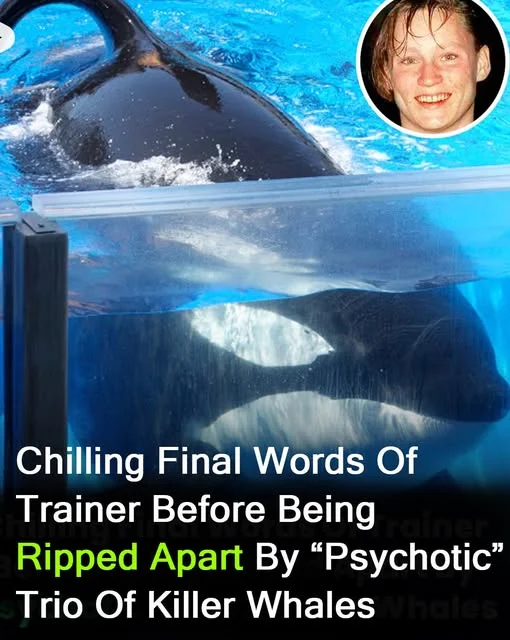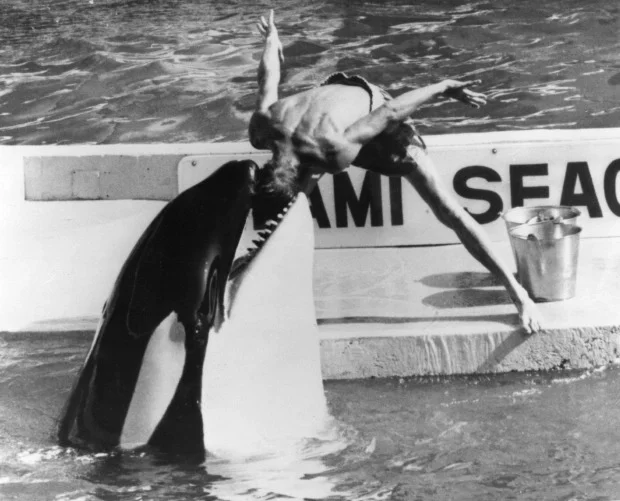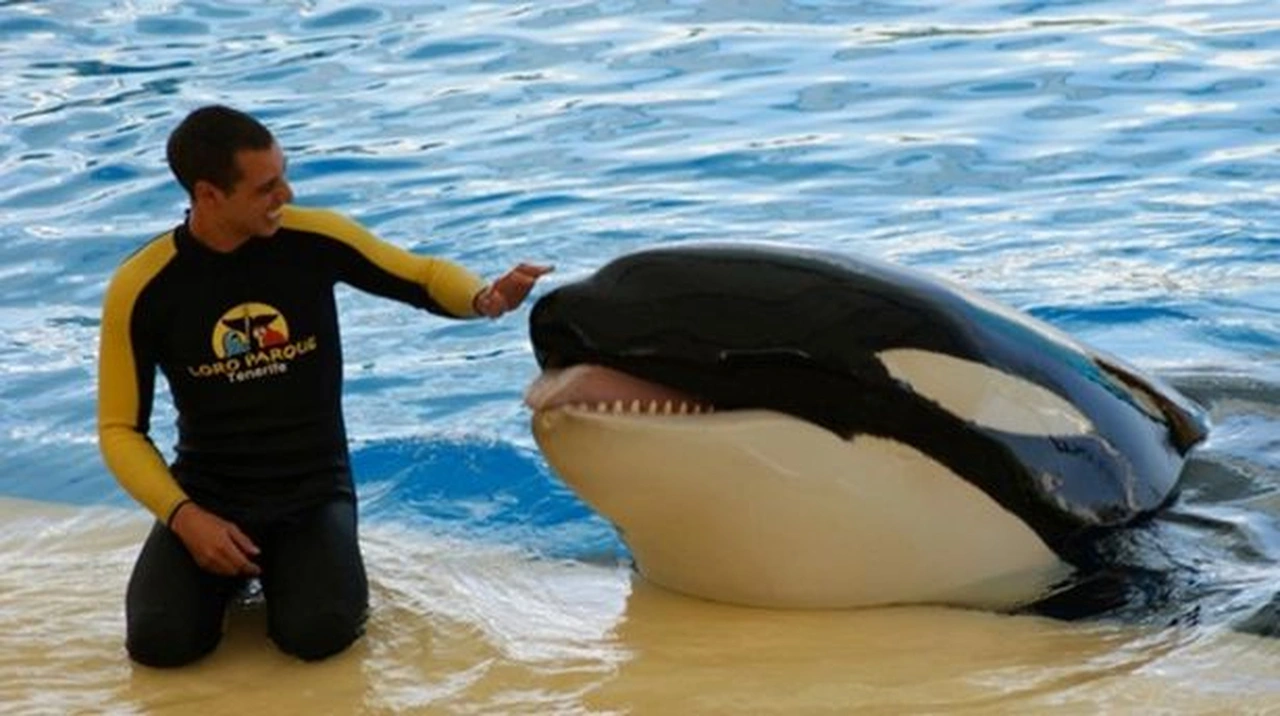In a haunting image captured at SeaWorld in Orlando, Florida, Tilikum, a male orca, glares at his trainers with an intensity that chills the soul. This is not just a photograph—it’s a window into the life of a majestic creature trapped in a world far removed from the vast oceans he was born to roam. Tilikum’s story, marked by captivity, tragedy, and controversy, raises profound questions about the ethics of keeping orcas in captivity. His life, explored in the 2013 documentary Blackfish, serves as a powerful reminder of the cost of entertainment and the complex emotional lives of these intelligent beings.

Tilikum’s Early Life and Capture
Born around December 1981 off the coast of Iceland, Tilikum’s life began in the wild, where orcas thrive in tight-knit family pods, hunting and communicating across vast distances. But in November 1983, at just two years old, his freedom was stolen. Tilikum was captured using nets in Berufjörður, eastern Iceland, and taken to Hafnarfjördur Marine Zoo. After nearly a year in a holding tank, he was transferred to Sealand of the Pacific in Victoria, Canada, where he shared a cramped space with two older female orcas, Haida II and Nootka IV. Both were pregnant and treated Tilikum with aggression, leaving him physically and emotionally scarred in an environment far from the open sea.
Life in Captivity
In 1992, Tilikum was moved to SeaWorld in Orlando, Florida, where he would spend the rest of his life. At SeaWorld, he performed for cheering crowds, but behind the spectacle was a life of confinement. Orcas in the wild swim up to 100 miles a day, but Tilikum was confined to a tank that, to him, was little more than a bathtub. The 2013 documentary Blackfish revealed how such conditions take a toll on orcas’ mental health, leading to abnormal behaviors like aggression and depression. Tilikum’s massive size—22 feet long and weighing 12,000 pounds—made his confinement even more unbearable, as he had little room to move or express his natural instincts.

The Tragedies Linked to Tilikum
While orca attacks on humans are virtually unheard of in the wild, captivity changes the equation. Tilikum was linked to three human deaths, each a stark reminder of the dangers of keeping these wild animals in artificial environments. In 1991, at Sealand of the Pacific, trainer Keltie Byrne slipped into the tank and was drowned by Tilikum and the other orcas. In 1999, Daniel P. Dukes, a man who illegally entered SeaWorld after hours, was found dead in Tilikum’s tank. And in 2010, the most high-profile incident occurred when Tilikum pulled experienced trainer Dawn Brancheau into the water during a performance, leading to her tragic death. These incidents, detailed in Blackfish, sparked global outrage and fueled debates about the ethics of orca captivity.
The Impact of Blackfish
The release of Blackfish in 2013 was a turning point. The documentary exposed the harsh realities of orca captivity, from shortened lifespans to psychological trauma. It argued that orcas like Tilikum, deprived of their natural environment and social structures, become prone to unpredictable and aggressive behavior. The film’s impact was seismic: SeaWorld’s attendance plummeted, and public pressure led the company to end its orca breeding program in 2016. Tilikum’s story became a symbol of the broader fight to end the captivity of marine mammals, inspiring activists and lawmakers to push for change

Tilikum’s Final Years
Tilikum’s health deteriorated in his final years. In January 2017, he succumbed to a bacterial infection at the age of 35—a far cry from the 50–80 years orcas can live in the wild. His death marked the end of a life defined by loss: loss of freedom, family, and, ultimately, his own well-being. Yet even in death, Tilikum’s legacy endures, challenging us to rethink how we treat the creatures we share this planet with.
Tilikum’s piercing gaze in that SeaWorld photograph is more than a moment frozen in time—it’s a plea for understanding. His life, marred by captivity and tragedy, forces us to confront uncomfortable truths about the cost of human entertainment. Through Blackfish and the global movement it sparked, Tilikum’s story has become a catalyst for change, urging us to prioritize the welfare of animals over profit. As we reflect on his legacy, let us honor Tilikum by advocating for a world where orcas swim free in the oceans they were born to call home.



